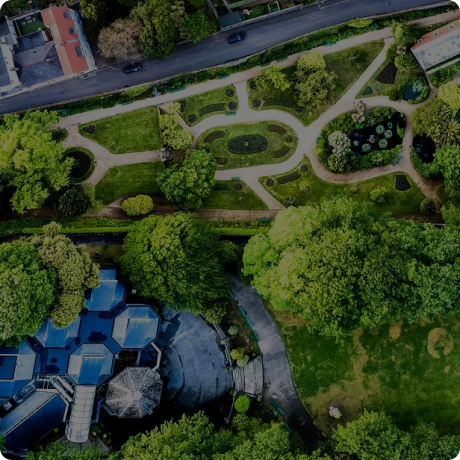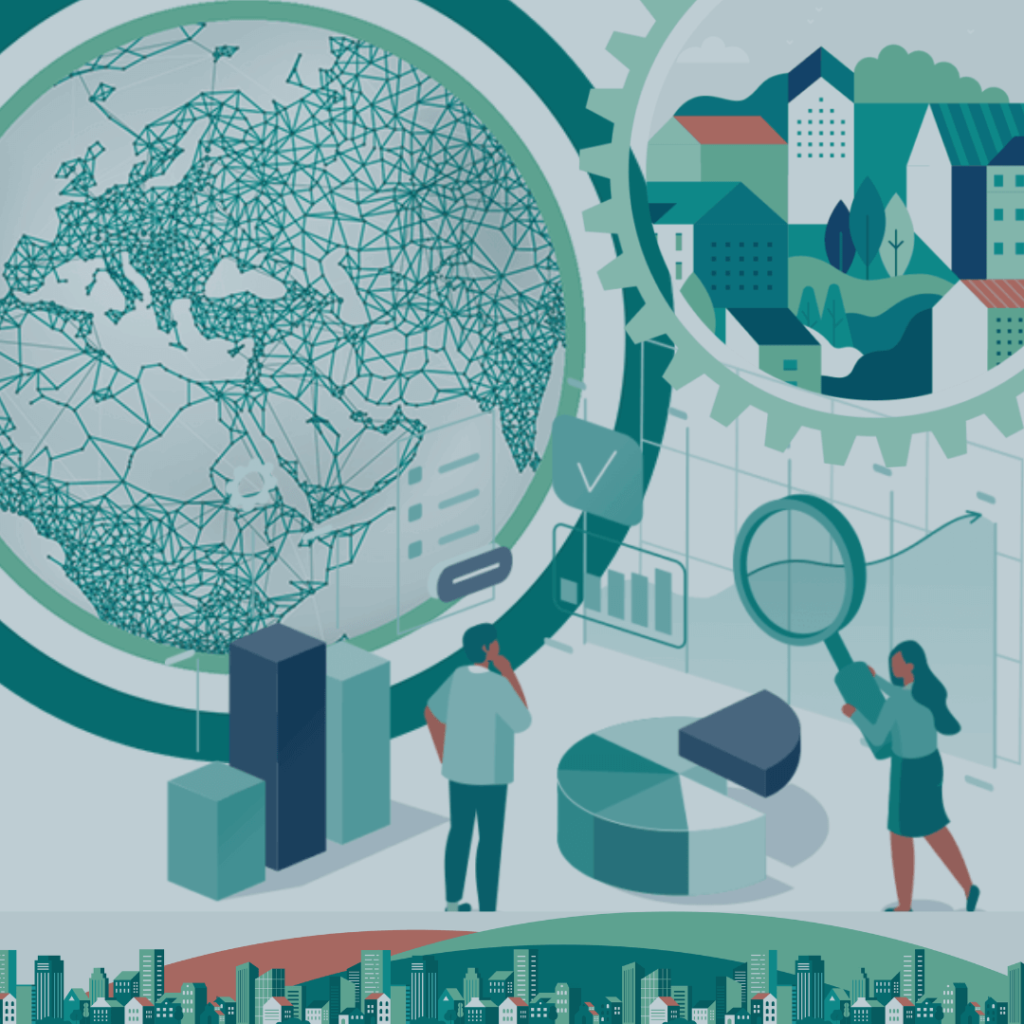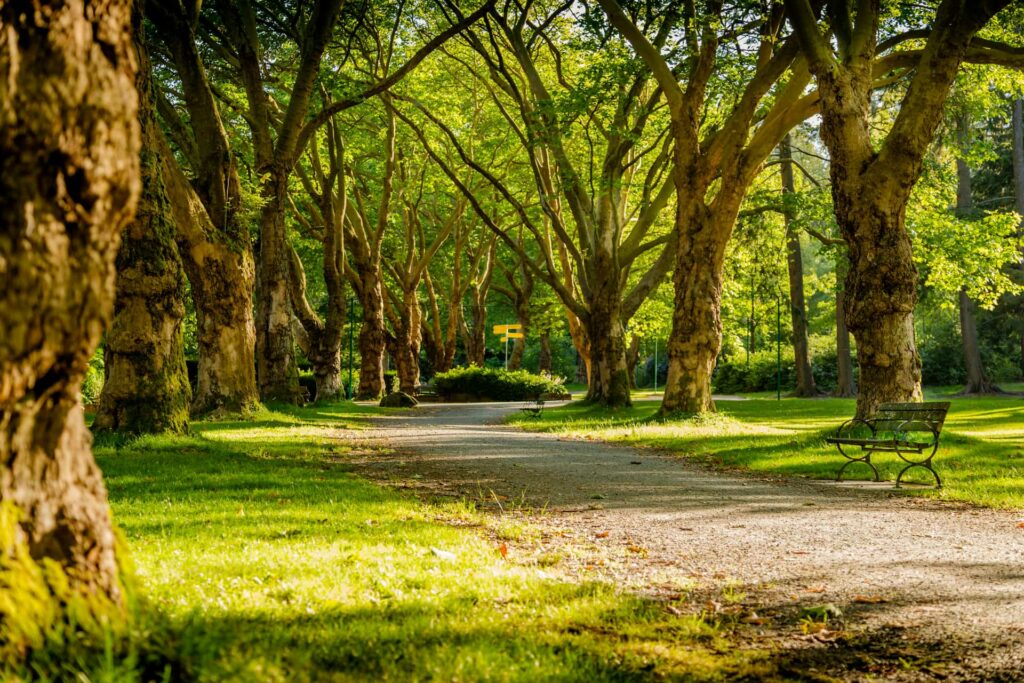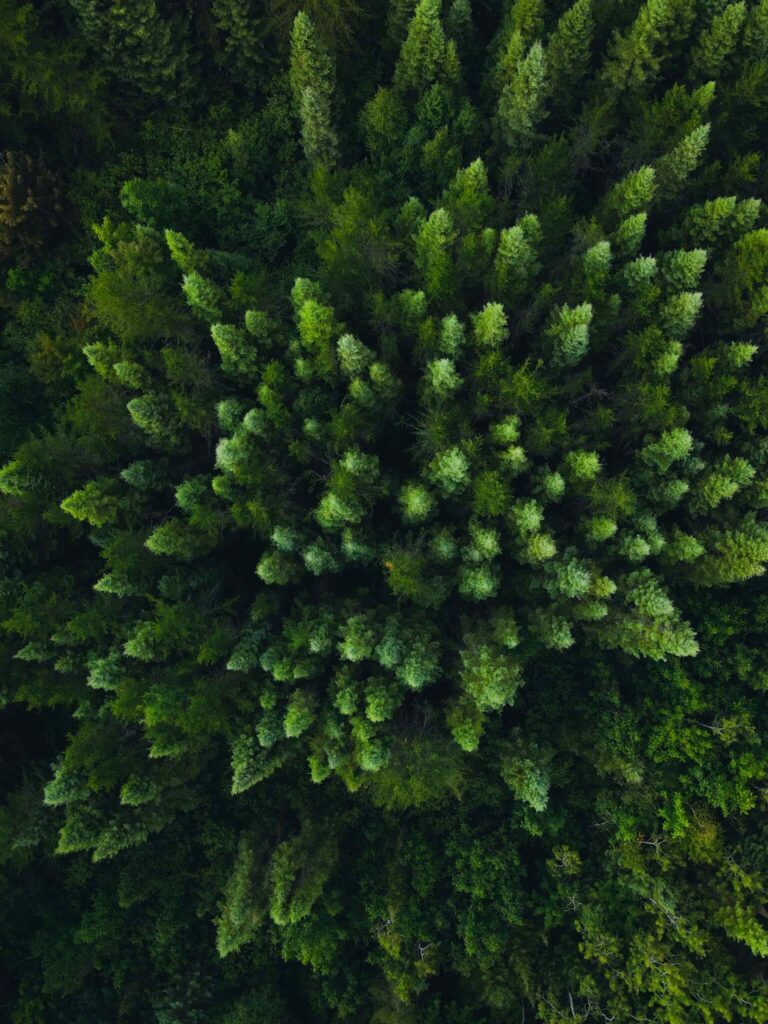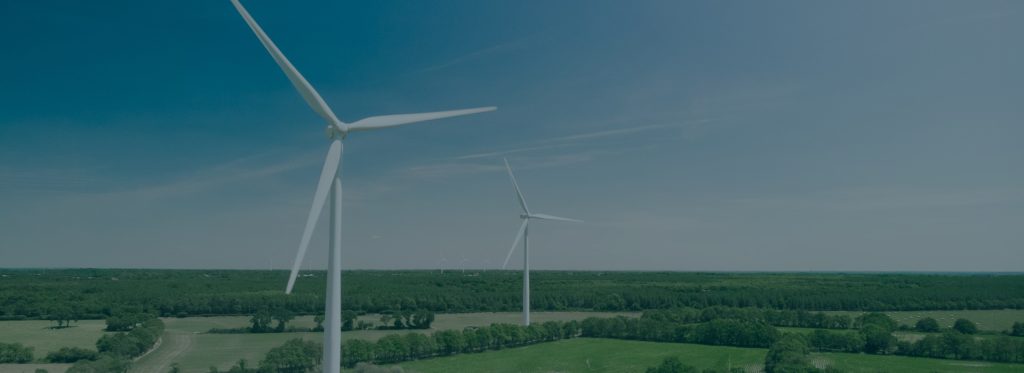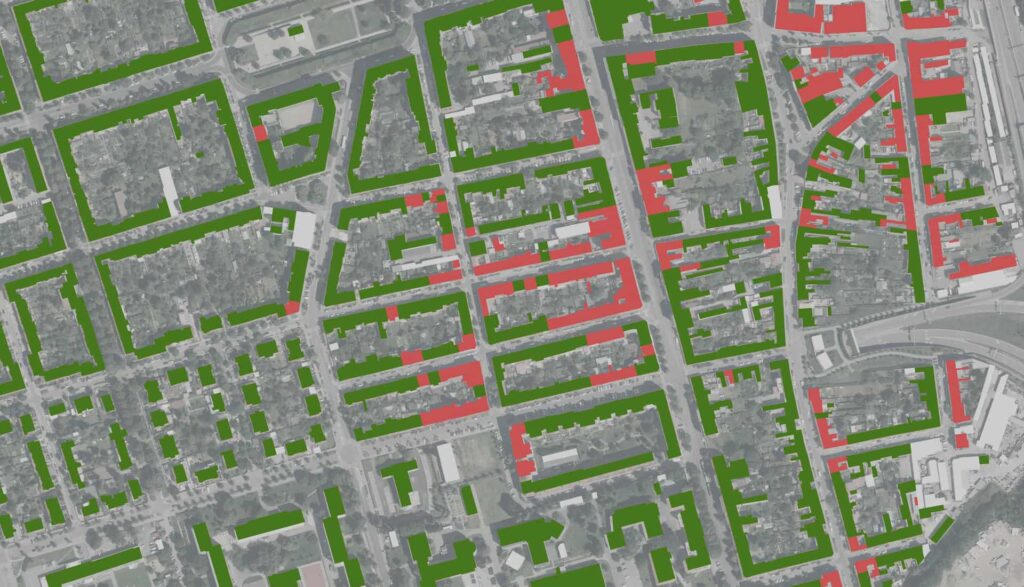As cities grow, so does the need for innovative ways to address urban challenges like air quality, extreme heat, and access to green spaces. Nature-based solutions (NbS) offer a promising approach by using natural systems—like parks, forests, and waterways—to benefit urban populations and ecosystems. The 3-30-300 rule and UpGreen initiative provide a framework to make cities more sustainable, equitable, and climate-resilient.
What Are Nature-Based Solutions?
Nature-based solutions (NbS) focus on using natural ecosystems to address societal challenges, from climate adaptation to social equity. Unlike traditional conservation, NbS actively engage with natural landscapes to yield direct benefits for urban residents. For instance, restoring wetlands can prevent flooding while creating habitats, and urban trees not only cool cities but improve air quality and mental well-being.
The importance of NbS has been highlighted globally as cities seek greener solutions to mitigate the effects of climate change. For instance, the World Wildlife Fund (WWF) points out that NbS are integral to reducing greenhouse gases, managing water systems, and increasing biodiversity. This approach enables cities to tackle challenges such as poor air quality, lack of shade, and the urban heat island effect, a phenomenon that causes cities to experience higher temperatures than surrounding areas.
The 3-30-300 Rule: A Framework for Urban Greening
The 3-30-300 rule offers a straightforward approach to increasing urban green spaces. Conceived by urban forestry expert Cecil Konijnendijk, this rule suggests that:
- Three Trees: Every resident should be able to see at least three trees from their home.
- Thirty Percent Canopy Cover: Each neighborhood should have at least 30% canopy coverage.
- Three Hundred Meters to Green Space: A park or green space should be within 300 meters of every residence.

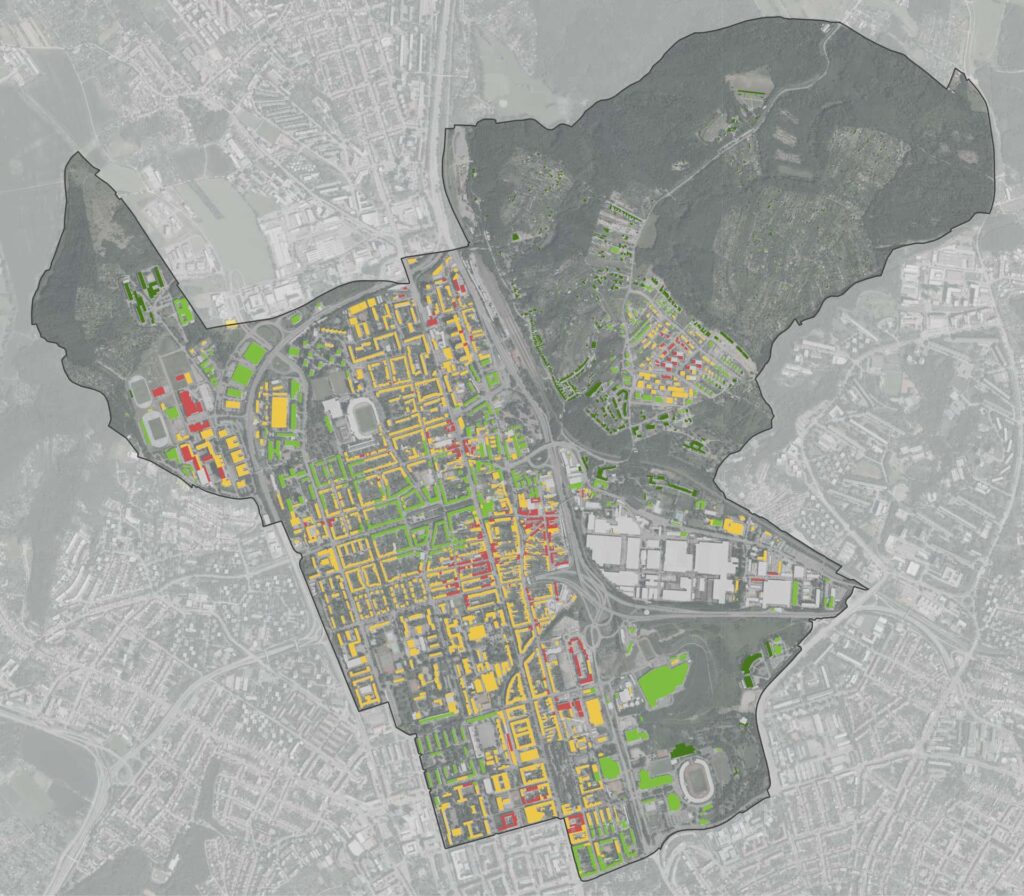
Image: A synthesismap showcasing the overall compliance with the rule 3-30-300 per-building, each assigned one of the four categories
(0 rules met, 1 met, 2 met, 3 met)
Studies show that adherence to these guidelines has tangible benefits. For example, an assessment in Barcelona found that those living in compliance with the 3-30-300 rule reported better mental health and lower reliance on antidepressants and other mental health services. Proximity to greenery has been correlated with reductions in stress, better physical health, and enhanced air quality. Implementing this rule citywide, however, remains a challenge, particularly in densely populated areas with limited space for tree planting.
UpGreen: Enhancing Nature-Based Solutions with Data-Driven Tools
UpGreen, a data-driven solution, uses satellite imagery and Geographic Information Systems (GIS) to map, analyze, and predict the state of urban greenery across cities. This AI-powered approach helps identify neighborhoods most in need of greenery and guide urban green planting efforts. It also provides cities with their greenery value and CO2 sequestration.
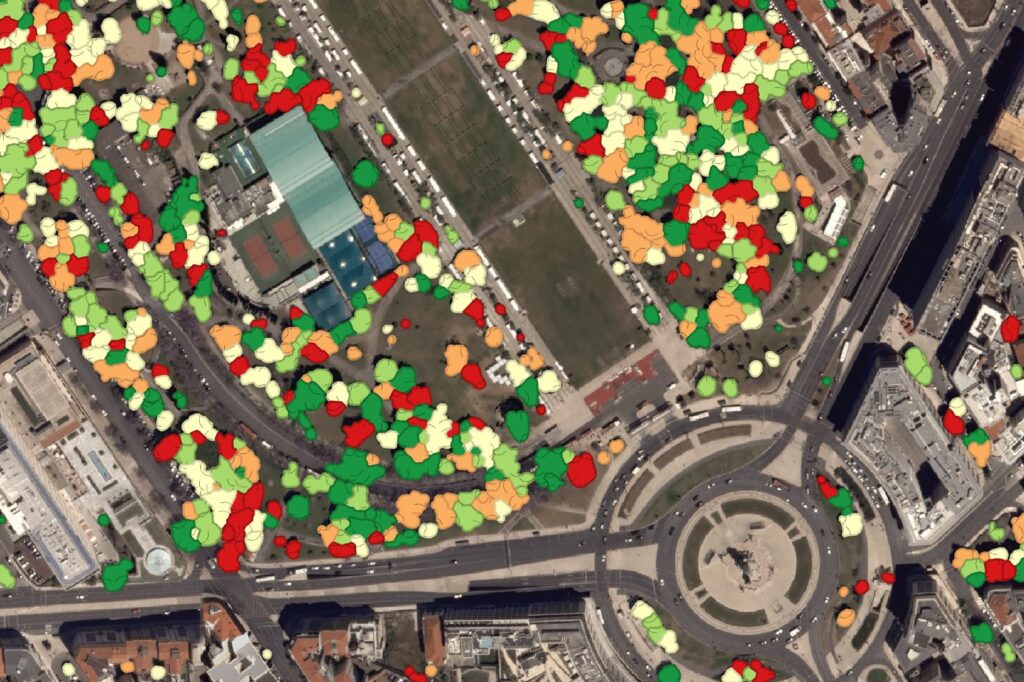
After a successful international feasibility study, the cities of Lisbon and Copenhagen have become demonstration sites for UpGreen. The project is also supported by a strong international partner, ACO Group, which complements the physical feasibility of UpGreen’s outputs.
The Social and Environmental Benefits of Urban Greening
Green spaces can promote social equity by offsetting disparities in neighborhood greenery. Wealthier areas have more trees and parks, impacting residents’ health and quality of life.
According to the World Resources Institute, accessible urban greenery can reduce inequality by providing underserved communities the same benefits as wealthier areas – recreation, community space, and more.
As cities warm, greenery also counters the urban heat island effect, enhancing resilience in vulnerable neighborhoods. Strategies like planting trees are increasingly crucial as cities plan for hotter summers.
Challenges and Future Directions for Nature-Based Solutions
While NbS offer an effective framework, their implementation poses challenges, especially in high-density areas where space is limited. Tools like UpGreen and the 3-30-300 assessment help by enabling cities to visualize existing green spaces, evaluate canopy coverage, and identify optimal locations for new greenery. Moreover, addressing the urban heat island effect, cooling through green infrastructure, and fostering social equity through green spaces all require collaboration across sectors.
Investing in NbS through the 3-30-300 framework and leveraging tools like UpGreen presents a scalable approach for cities to become greener and more resilient. As cities worldwide adopt these principles, we can anticipate a future where urban landscapes are designed not just for efficiency but for health, sustainability, and inclusivity.
